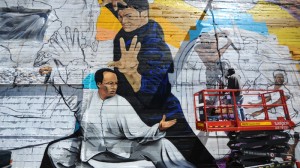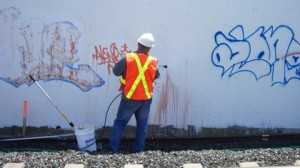The Abatement Mural Mystery
Graffiti is a polarizing word. Rampant tagging in urban areas contributes to blight, which according to law enforcement experts, decreases property values, and invites further vandalism and illegal dumping. These urban hieroglyphs are frequently a hot-button issue for both the media and elected officials; their sensationalistic rhetoric has turned the abatement industry into a $20 billion behemoth. For that reason, many practitioners of the form prefer the term “aerosol artist” – noting that the punitive measures often prescribed tend to…



